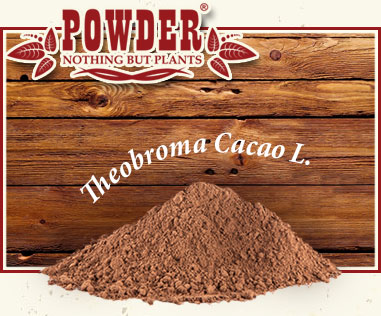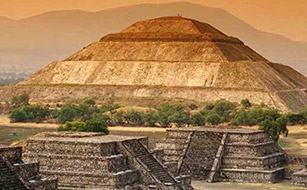- Home
- Food
- Powdered food
- Organic Cocoa Powder
Buy Organic Cocoa Powder
12,00 € (12,00 €)
Quantity
Description: Organic Cocoa Powder

Discover the exceptional properties of SUPERFOODS with the new powder range from our new brand POWDER Nothing But Plants® range!
This product range offers an innovative concept: an alternative way of consuming dietary supplements and healthier foods – in milkshakes, salads or mixed with your favourite foods.
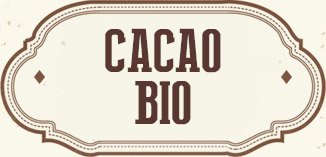
DESCRIPTION
Cocoa is known worldwide as the “food of the gods”. The seeds of the cacao fruit or cacao tree (Theobroma cacao L.) are rich in caffeine and theobromine, alkaloids that stimulate the nervous system. Their high and wide-ranging polyphenol and isoflavone content give them antioxidant, anti-inflammatory and cardioprotective action.
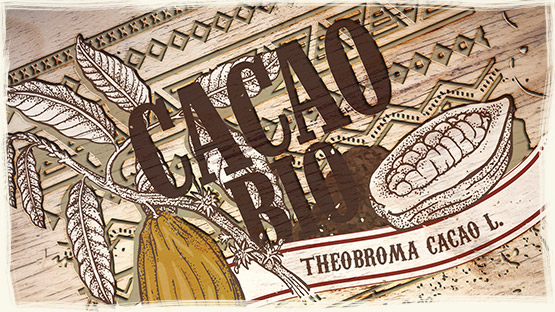
Our organic cacao is the best choice for giving your diet an antioxidant boost and protecting your cardiovascular health!
ORIGIN
Cocoa is the seed of the fruit of the cacao or cocoa tree (Theobroma cacao L., Malvaceae family). The cocoa tree is a small Amazonian tree whose fruit contains around 30-40 seeds about 2cm in length, protected by a white pulp or mucilage (1, 2).
The seeds are fermented and dried with the mucilage, and it is these seeds, or raw cocoa beans, that are later used to make chocolate (2).
There are three main cultivar groups of cocoa beans grown today: “Criollo”, “Forastero” and “Trinitario” (3).
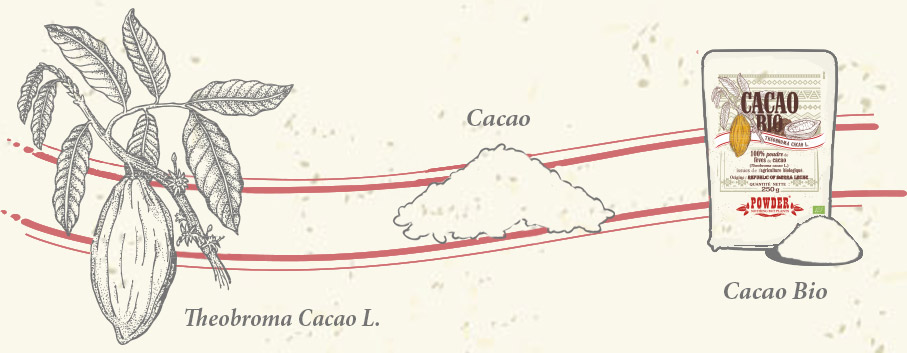
HISTORY
Cocoa is native to Mexico, Nicaragua and Costa Rica, but it was in Mexico that cocoa first became economically important to the Maya and Aztec people, who were the first to domesticate and use it. It was not until the arrival of the Spanish that cocoa cultivation spread throughout South America (4).
According to Mayan mythology, the god Quetzalcoatl discovered cacao on a mountain and gave it to the Mayan people with other food. They thanked him by making sacrifices and offerings to the cacao god, Ek Chuah (5). The Mayan people used cacao in two forms: as beans for offerings and exchanges, or in the preparation of chorote (beverage similar to what we know today as hot chocolate). Interestingly, this drink could only be consumed by men, as it was considered toxic for women and children (4).
COMPOSITION
The seeds' nutritional composition includes vitamins A, E and some from group B such as folic acid (B9), thiamine (B1) and pyridoxine (B6); and minerals such as potassium, magnesium, phosphorus and calcium (6, 7).
Cocoa beans contain alkaloids that stimulate the central nervous system, mainly theobromine and caffeine. They are also rich in polyphenols, particularly catechins and proanthocyanidins; and provide significant quantities of phytosterols (8). However, the quantity of these compounds reduces during processing (roasting) (9).
- OUR PRODUCT
- Product Name: Cacao powder (from organic farming).
- Scientific name: Theobroma cacao L.
- Part used: Beans
BENEFITS
Theobromine and caffeine are natural stimulants present in cacao (10). The combination of the two improves mood, response speeds and cognitive capacity.
Cacao also contains polyphenolic compounds that are of great interest, due to their antioxidant, heart-healthy and anti-inflammatory properties (9).
Finally, its isoflavones also have a cardioprotective effect, by reducing blood cholesterol levels (8).
USE, DIRECTIONS
Mix cocoa powder with water, juice, shakes or milk. The powder can also be sprinkled on meals and salads.
STUDIES
The psychostimulant effects of theobromine and caffeine have been studied over the years. Two double-blind studies that measured the effects on cognitive development and mood found that these effects were mainly due to the combination of the two molecules (theobromine and caffeine) present in cacao (11).
The heart-healthy properties of cacao's flavonoids have also been studied extensively: antioxidants, vasodilatory, reducing inflammation, blood pressure and inhibiting platelet activity (12). In vitro studies have suggested that flavonoids can have vascular effects, by improving the dilation of blood vessels (13).
A clinical trial conducted in men and women suggested that theobromine could be responsible for increasing HDL levels in the blood (good cholesterol) (14).
Finally, the phytosterols present in cocoa have been found to have an hypocholesterolemic effect. Recent studies observed a possible blocking effect of phytosterols during the absorption of cholesterol (8).

BIBLIOGRAPHY
- Cocoa and Chocolate-Their History from Plantation to Consumer. Knapp, A. Read Books Ltd. 2013.
- Phenological growth stages of cacao plants (Theobroma sp.): codification and description according to the BBCH scale. Niemenak et al. Ann of App Biol. 2010. 156(1): 13-24.
- The genetic diversity of cacao and its utilization. Bartley B. G. D. Wallingford, UK: CABI Publishing. 2005. 341 pp.
- Historia y dispersión de los frutales nativos del neotrópico. Patiño,V.M. No. 326. CIAT. 2002.
- The cultural pharmacology of chocolate. Batchelder, T. Townsend Letter for Doctors and Patients. 2004. (256) 103-107.
- Tratado de nutricion y calidad nutritiva de los alimentos. Hernández, A. G. D. Ed. Médica Panamericana. 2010. Vol. 2.
- Chemical composition and physical quality characteristics of Ghanaian cocoa beans as affected by pulp pre-conditioning and fermentation. Afoakwa et al. J Food Sci Technol. 2013. 50(6): 1097-1105.
- Estudio nutricional del cacao y productos derivados. Rafecas and Codony. Instituto del Cacao y el Chocolate (ICC). 2000. Universidad de Barcelona. España.
- Review on polyphenols in Theobroma cacao: changes in composition during the manufacture of chocolate and methodology for identification and quantification. Wollgast and Anklam. Food Res Int. 2000. 33(6): 423-447.
- Evaluation of xanthine derivatives in chocolate–nutritional and chemical aspects. Matissek. Eur Food Res Technol A. 1997. 205(3): 175-184.
- Health benefits of methylxanthines in cacao and chocolate. Franco et al. Nutrients. 2013. 5(10): 4159-4173.
- The emerging role of flavonoid-rich cocoa and chocolate in cardiovascular health and disease. Engler and Engler. Nutrition reviews. 2006. 64(3): 109-118.
- Vascular effects of cocoa rich in flavan-3-ols. Heiss et al. Jama. 2003. 290(8): 1030-1031.
- Effect of cocoa and theobromine consumption on serum HDL-cholesterol concentrations: a randomized controlled trial. Neufingerl et al. Am J Clin Nutr. 2013. 97: 1201-1209.
Ingredients: Organic Cocoa Powder
Food allergens:
This product does not contain allergens (in accordance with Regulation (EU) No 1169/2011) nor genetically modified organisms.
ORGANIC COCOA POWDER: NUTRITIONAL INFORMATION
Use: Organic Cocoa Powder
DIRECTIONS:
Mix cocoa powder with water, juice, shakes or milk. The powder can also be sprinkled on meals and salads.
STORAGE INSTRUCTIONS:
Store in a cool dry place away from sunlight.
Quality: Organic Cocoa Powder
PRODUCT NAME
Organic Cocoa PowderBOTANICAL NAME
Theobroma cacao L.REFERENCE
IK20QUANTITY
250 gBATCH NUMBER
D16750EXPIRATION DATE
2025/10MADE
In FranceFABRICATION AND GUARANTEE:
This food is manufactured following GMP standards. GMPs are the good manufacturing practice guidelines for the European food industry.
Organic products at Anastore are produced in accordance with Council Regulation (EU) No 2018/848 of 30 May 2018 and its subsequent amendments on organic production and the labelling of organic products, with the aim of ensuring consumer confidence and protecting consumer interests.
Certificate issue date:
Questions: Organic Cocoa Powder
Would you like more information about our product?
Ask your question here and our team of experts will answer you as soon as possible.













